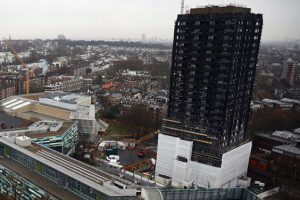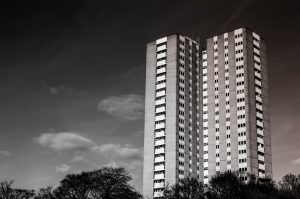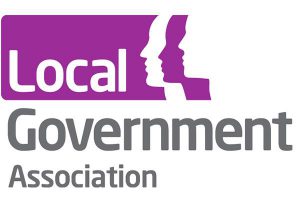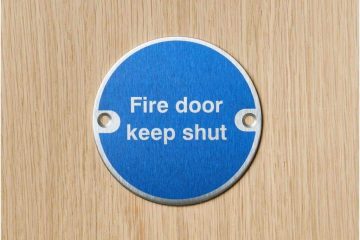Review Released

The final report on the Independent Review of Building Regulations and Fire Safety led by Dame Judith Hackitt has been published.
Having read through the 156-page review as well as the 53 recommendations made in the report, it is clear that we will see a significant culture change in the way risks are regulated and managed in the future.
Although the report isn’t specifically focused on the Grenfell tragedy, it has been seen as the main driver for the review prompting some to mistakenly call the report the ‘Hackitt Grenfell Review’.
The remit of the review is wide ranging and at the outset Dame Judith Hackitt identified significant systems failures which form the focus of the review:
- Ignorance of existing regulations and guidance
- Indifference and a failure to prioritise safety with the primary motivation being to do things as quickly and cheaply as possible
- lack of clarity on roles and responsibilities, with ambiguity as to where responsibility lies.
- Inadequate regulatory oversight and enforcement tools, resulting in a lack of enforcement or penalties that are too small to be an effective deterrent.
Preliminary Comments
Firstly, It is important to note that within the Hackitt Review, blocks being 10 storeys or more in height are referred to as High Risk Residential Buildings (HRRB). Most of the recommendations have however, included a caveat that the government should consider applying the requirement to other multi-occupancy residential buildings also.
The Hackitt Review includes a detailed set of recommendations including:
- An outcomes-based approach to the regulatory framework to be overseen by a new regulator that can drive the right behaviours
- Clearer roles and responsibilities throughout the design and construction process and during occupation
- Residents to be involved and listened to on issues affecting the safety of their home
- A more rigorous and transparent product testing regime
- Industry to lead on strengthening competence of all those involved in building work

High Risk Residential Building
Dutyholder
A significant recommendation in the report is for responsibility for the safety of all parts of a high-rise building to be held by a clear and identifiable dutyholder, which should be the building owner or landlord.
Residents must be kept notified of the name and UK-based contact information of the dutyholder. The dutyholder must nominate a named ‘building safety manager’ with relevant expertise to be responsible for the day-to-day management of the building and act as a point of contact for residents.
The managing agent would most likely be nominated as the building safety manager, but accountability must remain with the dutyholder.
Clearly there will be a competency requirement here to ensure that ‘building safety manager’ is equipped with the necessary knowledge, qualifications and experience to fulfil the role. As best practice it would be sensible to see this role in operation in all types of blocks and not just those HRRB like Grenfell; thus improving the overall management of health, safety and fire throughout the property management industry.
Reactions to the ‘Hackitt Review’
In relation to the ‘no-ban’ headline that has dominated the media in relation to cladding, there has been a number of views:
Labour MP David Lammy branded the report on Twitter as a
“betrayal and a whitewash”, saying: “It is unthinkable an
d unacceptable that so many people can die in a disaster like Grenfell and one year on flammable cladding has not been banned.”
Dame Judith Hackitt responded to this and others by saying that the focus on cladding was an example of “Siloed thinking” and insisted that there was a need for “a whole system change” to prevent future tragedies.

Lord Porter of the LGA
Lord Porter, Tory chairman of the Local Government Association (LGA), said it was“disappointing” that there was no ban on dangerous cladding and urged the government to bring in a temporary ban “until we have a regulatory and testing system which is fit for the 21st Century”.

Dan Daly from the LFB
Whereas The London Fire Brigade’s Assistant Commissioner for Fire Safety, Dan Daly stated that:
“We understand why many would want materials such as ACM cladding banned but the Brigade agrees with Dame Judith Hackitt’s conclusion this would not help safety in the long term….It’s more important that the review concentrates on appropriate testing regimes for building materials, tighter regulations and ensuring that competent people are making decisions about building safety.”
What Next?
Further guidance on testing of cladding will no doubt emerge but in the meantime the approach remains the same and anyone in doubt should seek advice from your health, safety and fire specialist or visit the Ministry of Housing, Communities and Local Government website on cladding.
It is clear that there is a focus in the Hackitt Review on dutyholder responsibilities during occupation, which may create a demand for improved competencies in this area leading to a requirement for further training of block managers. There are no additional recommendations for competence in regards to risk assessors generally, however for those working on HRRB there is a recommendation for enhanced competencies.
I anticipate the demand for assessors to be on a recognised register will increase over the next 6 months. As there are currently 5 different risk assessor registers, I anticipate that the government will encourage more coordination between the various professional bodies and organisations to better coordinate these registers to maintain public trust and confidence in them.
Get in touch
This will, no doubt, be a ‘hot topic’ for the months to come and we will keep you updated on 4site LIVE, when there are further developments.
Myself and others at 4site recently attended the IRPM Annual Seminar as the main sponsor of the event. The Hackitt Review was certainly a prevalent subject, and so for any further questions on the review you can contact us using the details HERE


